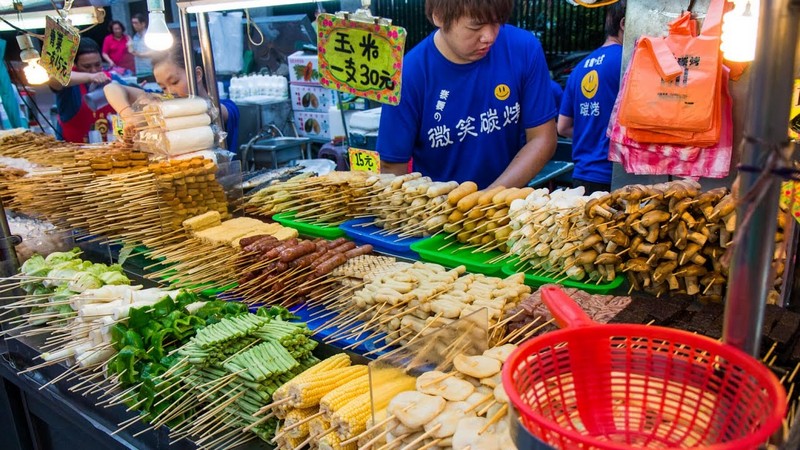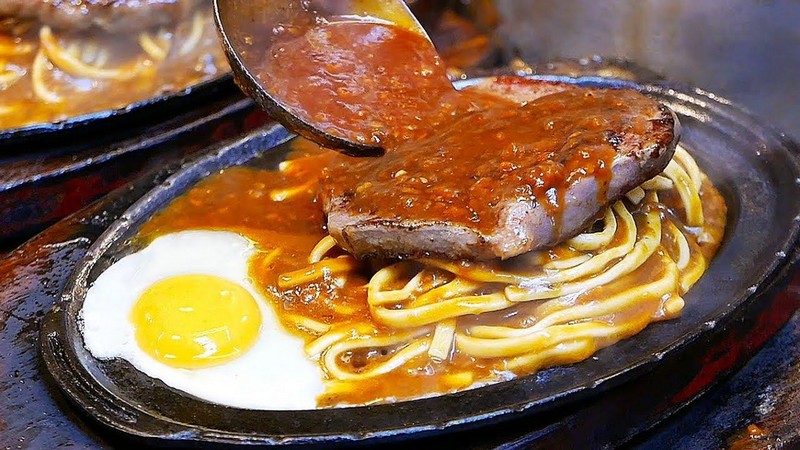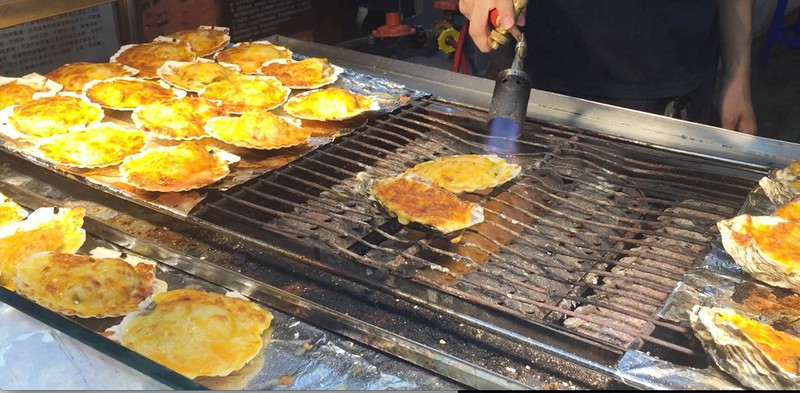“Young people in Taiwan don’t cook very often. They eat lunch at the office and dinner at the night market with their family, leisurely walking around to enjoy the rich cuisine in these markets”.
[rpi]
There’s a good reason that Taiwan has long been regarded as a culinary paradise and a wonder to tourists. Taiwanese cuisine is sophisticated, rich, and diverse, and showcases the creativity of its influences, a perfect blend of Chinese, Korean, Japanese, and even a bit of Western, culture.

Thanks to well-developed agriculture and fishery sectors, Taiwanese cooks often use fresh, local ingredients, spiced with a bit of creativity, to create exquisite dishes for diners.
Taiwan is famous for its night market cuisine. You must stop by a food cart that sells the oyster omelette, the best representative of Taiwanese cuisine. This dish combines the seafood flavour of oysters, fatty flavour of eggs, as well as vegetables and sauces. Oyster omelette is always a popular dish for both locals and foreign tourists alike.
Walking around the market, you’ll be greeted by the faint stench of stinky tofu. Many people won’t dare to try it, but if you do, you will be addicted t this unique scent and enjoy its rich, sweet taste. It will surely be an unforgettable experience.
At food carts that sell fried and baked dishes, you will enjoy the creativity of ingredients in Taiwanese cuisine. You will encounter many strange dishes, that even after tasting, you will not be able to guess the ingredients. Tian-bu-la (tempura) is fried or baked fish paste of different shapes, served with a sweet brown sauce. Another odd dish is zhu-xue-gao, made from glutinous rice and pork, and popular among Taiwanese, thanks to the sticky rice and sweet taste of pig’s blood. The snack is covered in a layer of peanut powder and cut into slices.

Another dish worth trying at the night market is Jipai – fried chicken steak, made from chicken breast coated in a layer of flour and fried until the crust is crispy. You can enjoy the sweet taste of fresh chicken meat, juicy on the inside, crispy on the outside. Each food cart has its own marinade, so the taste of this dish will vary.
If you’re not fond of fried snacks, you can stop by a street cart that serves fresh beef noodles. Hand-made thick noodles are cooked with tenderloin beef and vegetables. The best part of this dish is the soup stock, with rich flavours thanks to ingredients used in traditional Chinese medicine.
Ribs stewed in medicinal herbs are a great dish for cold winter days. Goat or pig ribs are cooked with roots, herbs, and dried fruits until tender. This is a healthy dish that helps nourish the body. The sweet taste of bone broth combines with the aroma of medicinal herbs will surely warm up diners.
If you do not enjoy the busy atmosphere of the night market, you can visit Lu-Wei Restaurant, which serves hundreds of dishes made from pig ears, legs, and hearts, chicken intestines, vegetables, and noodles. You will get a basket to choose your ingredients, and the chef will cook your ingredients in a pot. The flavours of this dish come from the broth that cooks the ingredients, and each selection will have its own flavour. These flavours are the secret of the restaurant, which also makes this dish appealing.

Visiting Taiwan, you must try hot pot, especially spicy hot pot (Ma la). The spice is not made from fresh chilli, but from six types of seeds and herbs to create a strong and rich taste: anise, cinnamon, garlic, ginger, dried chilli, and pepper. The aroma of anise and cinnamon adds to the unforgettable taste of the soup. The hot broth combines seafood, beef, meatballs, fish balls, vegetables, and mushrooms, stimulating all of your senses.
Finally, have some douhua for dessert, a combination of green beans, red beans, and taro, or a glass of boba milk tea will be a perfect finale for your culinary journey.
No matter how many times you visit Taiwan, walking in the culinary paradise, the night market is always a memorable experience.
Wanderlust Tips

